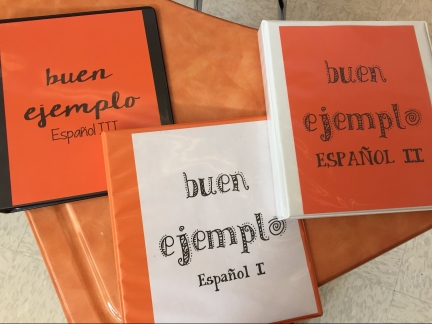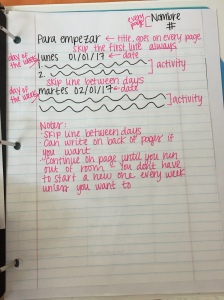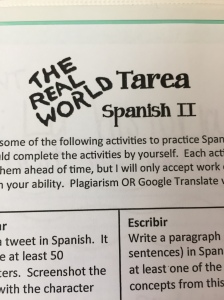
I came across this idea on Mis clases locas by the fabulous Allison Weinhold. I sincerely hope that my blog can be half as helpful as Allison’s blog has been to me.
Do you remember the three fictional characters posts on Twitter and Instagram? I don’t know if many students participated, but it was really popular among my peers–and my mother’s. Last semester, I was looking for a review of ser (to be) in Spanish I, and Allison’s post gave me a great idea.
For this project, students had to create a collage of the three fictional characters that they felt best described their personality. I said it could any character (cartoon, TV, movie, book, or whatever). They uploaded the collage of their characters, without their name, to Google classroom.
The next day, students wrote the names of their characters and where they were from on a piece of paper. Next, they changed the characters’ names to subject pronouns in Spanish (another element of this unit). Then they wrote positive and negative ser sentences.
Example (my collage is above)
- Belle–Beauty and the Beast
- Ella
- Ella es inteligente.
- Ella no es perezosa.
- Marie–The Aristocats
- Ella
- Marie es bonita.
- Marie no es simpática.
- Katniss–The Hunger Games
- Ella
- Katniss es trabajadora.
- Katniss no es rubia.
Next was by far the most fun part of the activity. I projected someone’s collage, and students wrote a sentence about each of the characters. One sentence had to be negative (to practice the placement of “no” in the sentences). Then they guessed who the collage belonged to. It was so much fun, and kids were so engaged. They even wanted to keep doing the activity instead of videoing into the weekend!
Student examples:
Aprendizaje. This activity was a blast. It could be done for review of ser or as “a get to know you” activity. I was shocked at how much I learned about my students from their character selections. Next time, I will have them include the name of the character and the character’s movie/TV show/book in the collage because some of them had relatively unknown characters. I will definitely continue doing this activity in Spanish I and might include it as a start of the semester review for II and III. I also think this activity could be incorporated into other aspects of Spanish.
Do you do something similar? Would this be a hit with your classes?











